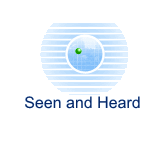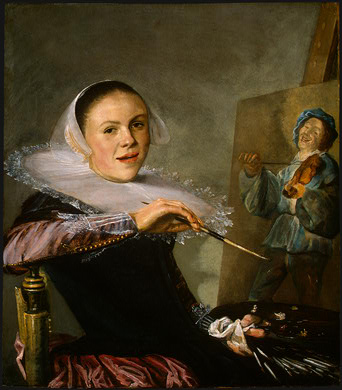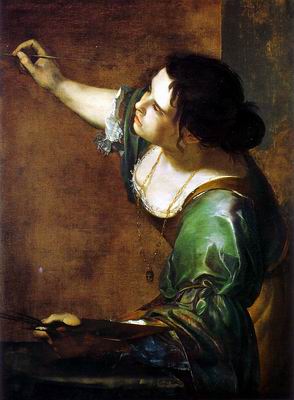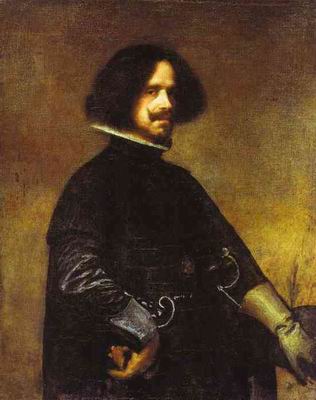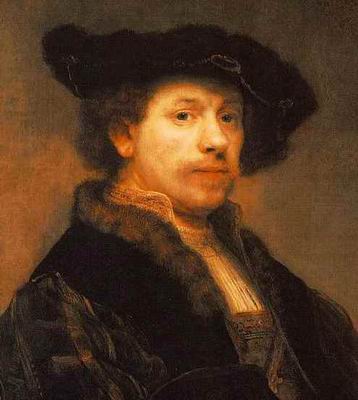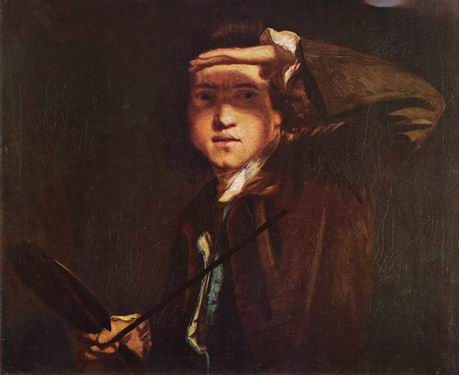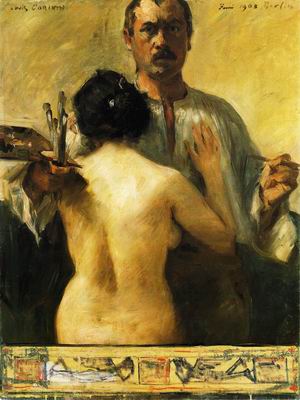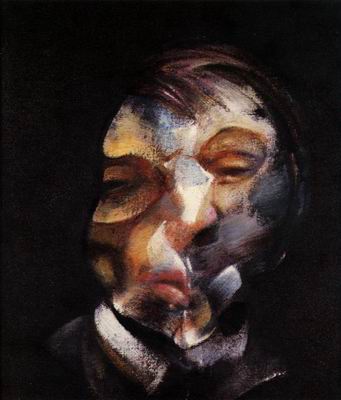|
Editor:
Marc Bridle
Webmaster: Len Mullenger
|
Seen and Heard Art
Review
"We are all fascinated by how artists
have scrutinised themselves. By showing the different ways
in which artists have chosen to paint their own image in
the exhibition opens up questions of consciousness, process
and identity. A number of collections have been very generous
in offering some extremely important works."
Judith Lyster's laughing Self-Portrait circa
1630 becomes a parody of Franz Hals' The Merry Luteplayer
and his more bucolic paintings. Here she is playing at being
an artist in drag whilst being an artist in her own right
as she paints a jolly fiddler. It is as if she is saying
to you: "You didn't expect me to be sitting here painting
before you." Lyster was once thought to have painted most
of Hals' paintings and was reputed to have been Hals' mistress.
During the late 1930s, at the height of the 'forgeritis'
mania, Hals' painting of The Merry Luteplayer was offered
for sale by a famous art dealer as a painting by Judith
Lyster. She seems to be having the last laugh on us all
as if she has some strange secret. Could it be that she
did not paint this 'self-portrait' - but it was, in fact,
painted by Franz Hals depicting his pupil-mistress?
Artemisia Gentileschi's unusual Self Portrait
as the Allegory of Painting 1630 is arresting for the sheer
audacity of with which she chooses to paint herself at a
strange angle. How did she achieve this strange effect?
She paints as if viewed from a surveillance camera positioned
above and to her left. The element of movement gives the
image a musical sensation whilst the pale skin tones of
her face and arms shine out against the sombre neutral background
and the shimmering emerald green sleeve. The enigma of the
painting is where is she looking? In the mirror, at an angle
above her? Is she pretending to paint herself? We are suspended
above yet also looking up at her: a paradox on the play
of spaces; how did she achieve this magical image?
Rembrandt's Self Portrait 1640 stands out in a class of its own: it is not just a self portrait per se but a synthesis of being and silence; as well as a constellation of painting, architecture, music, space, time, science, philosophy, etc. yet language utterly fails to fathom Rembrandt's face. The hyper sensitively applied paint has a smazey shimmering effect which gives the image a free floating sensation akin to the Velázquez' Self Portrait 1645 on display - and both paintings do not have 'back grounds' but are bathed in an air-scape of being, thus acting as an aura illuminating the artists. As non-illustrational painters both Rembrandt and Velázquez record the sensation of time that photography cannot capture.
Elizabeth-Louise Vigée-Le Brun, favourite
portrait painter of Marie Antoinette, has left us dozens
of sublime self-portraits. Her scintillating Self-Portrait
in a Straw Hat 1782 radiates light and has an uncanny hypnotic
effect on the viewer with her glowing gaze piercing through
us. Her luminous eyes - although shaded by the brim of her
daintily trimmed straw hat - nevertheless compel our gaze.
She holds brushes and palette in her left hand at the ready
with her colours moist and glistening ready for work - whilst
her glowing white hand makes an elegant arabesque gesture.
This image tells us that an artist is no mere artisan but
a beautiful lady of style, class, taste and distinction
- and thus profoundly politically incorrect in comparison
with Saatchi's 'Sensation' slob sub-standards.
Lovis Corinth's striking sculptural Self Portrait with Model 1903 is unusual in depicting the model as spectator with her back to the viewer: the artist sees us seeing her back. Corinth paints his head (rather than his face) as a sculptural solid block where features become secondary shadows. As opposed to being a mere object the model is touching the artist whilst he is in the process of painting his self-portrait, thereby emphasising Corinth's overt sensuality and the delight in depicting female flesh. This must surely be unique among self-portraits that it shows an artist actually intimately embracing his model while he paints both himself and her. This powerful image sums up the joyous hedonism we associate with Corinth's voluptuous flesh fuelled work.
Francis Bacon's sickly serene Self Portrait
1971 is a refracted faceted face akin to some of Paul Cézanne's
self-portraits which are reminiscent of cut precious gem
stones reflecting light. Bacon painted with a very dry brush
giving the sensation of a granular, grainy effect. The melancholia
mood is of a man melting before you: a disturbing image
of a disturbed man in a disturbed century. This is one of
the last great self-portraits Bacon painted before he went
off the rails and went back into to the lazy worn grooves
of inane illustration. This compelling and revelatory exhibition
is not to be missed. It is jointly organised by the National
Portrait Gallery, London and the Art Gallery of New South
Wales, Sydney, and sponsored by Channel 4. It is curated
by Anthony Bond, Head Curator at the Art Gallery of New
South Wales, and Dr Joanna Woodall of the Courtauld Institute
of Art. Tickets can be booked online, by calling
0870 0130703 (transaction fee applies) or in person at the
Gallery. Groups of 10 or more should book through the Learning
and Access Department on 020 7312 2483. Publications & Gifts
.
Back to the Top Back to the Index Page |
| ||
|
||||

